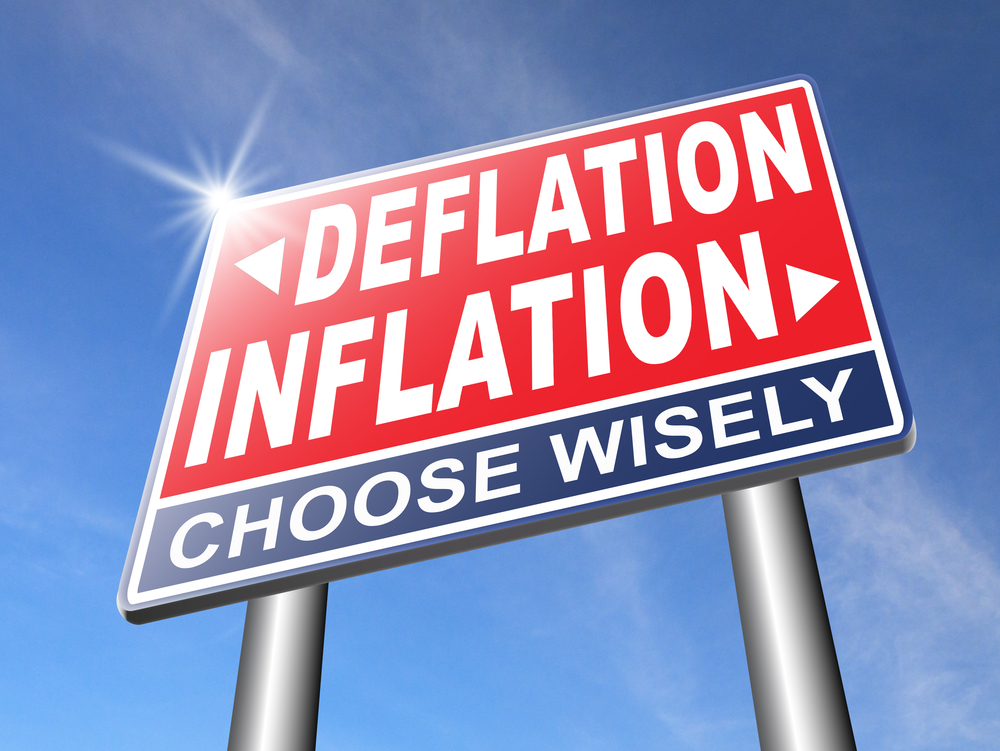Never have the U.S. and Chinese economies been more interdependent than they are today. Never has the value of the bilateral trade and investment relationship been greater. Never has the precarious state of the global economy required comity between the United States and China more than it does now. Yet, with Donald J. Trump ascending to power on a platform of nationalism and protectionism, never have the stars been so perfectly aligned for the relationship to descend into a devastating trade war.
Bilateral trade frictions are nothing new. Over the years they ebbed and flowed, but the tensions were managed well enough to avoid any major meltdowns. For the past eight years, the U.S.-China relationship has been under increasing duress, taxing patience and requiring great restraint from Washington and Beijing. Both governments imposed trade restrictions, but they did so in manners plausibly consistent with the prevailing rules of international trade.
The election of the impetuous Trump, who sees trade as a zero-sum competition between countries that either win or lose, renders restraint temperamentally improbable and strategically illogical. Because the United States runs a large bilateral trade deficit with China, President Trump views Beijing as the more dependent party in the relationship with more to lose from a trade war. Perceiving the consequences of a trade war as relatively benign for the United States makes that course of action a realistic option for Trump. This thinking amounts to a major departure from over 80 years of U.S. trade policy orthodoxy.
Trump’s dangerous economic views didn’t just appear out of the blue. Receptivity in the United States to a more strident, protectionist, “America First” approach to trade relations — especially with respect to China — has been growing in recent years. Prominent are perceptions that unfair Chinese economic policies — and feckless U.S. responses to those policies — were the proximate cause of manufacturing jobs losses over the years, especially among those whose livelihoods were most affected. Belief is widespread that China “gamed the system” to become stronger at America’s expense and now challenges the United States for global strategic and economic preeminence. Today, it is more common than ever before to hear regret over the U.S. decision to engage China economically and allow her into the global trading system with too few strings attached. Although Trump’s rise renders a trade war dangerously likely, the state of the bilateral economic relationship is the culmination of a long, inexorable progression to the edge of the abyss.
The Long March toward Trade War
In the wake of the 1989 Tiananmen Square massacre, the George H. W. Bush administration decided it would continue the U.S. policy of engagement with China. At that time, bilateral trade amounted to a mere $17.6 billion, and direct, cross-border investment was trivial. But the potential economic benefits of broader trade and investment ties were obvious, and continued engagement — it was argued — would be more likely to spur economic and political liberalization in China than would policies designed to punish and isolate her. Besides, it was reasoned that sanctions would hurt the Chinese people more than the Chinese government, and cede business opportunities to European companies.
So for the next 20 years, U.S. policy toward China was premised on the idea that the economic relationship had great promise and was worth cultivating and nurturing, regardless of important differences between Washington and Beijing over matters such as human rights and geopolitics. Trade and economics were sacrosanct and would be prioritized, and the more incendiary matters de-emphasized.
In the first half of this period, the Chinese central and provincial governments implemented all sorts of market reforms to unshackle their economy and to meet the requirements of membership in the World Trade Organization (WTO). By the time China joined the WTO, in 2001, twoway trade had increased to $121.3 billion and direct investment was $12 billion. By 2008 the value of bilateral trade reached $409 billion and investment hit $56 billion.
China had evolved from an agrarian economy to a basic manufacturing economy to a full-fledged industrial powerhouse in the course of about 20 years. The increase in trade and investment lifted hundreds of millions of Chinese out of poverty and benefitted workers, businesses, and consumers on both sides of the Pacific. But the process generated plenty of frictions with U.S. industries along the way.
U.S. economic policy toward China was essentially conducted as a balancing of two broad sets of interests. On one side were import-competing U.S. industries and organized labor, which sought to impede Chinese exporters’ penetration of the U.S. market. They had opposed granting China “Normal Trade Relations” status over the years and had opposed China’s bid to join the World Trade Organization. They demanded tariffs, quotas, and other policies to redress their concerns — both real and imagined — about objectionable Chinese practices, such as dumping, subsidization, currency manipulation, intellectual property theft, forced technology transfer, and labor and environmental abuses.
On the other side were U.S. multinational companies and exporters, which favored a more cautious and less antagonistic approach. They preferred the idea of accommodating China as it fumbled its way forward in the process of joining and integrating with the global economy. These groups counselled against policies and actions that could jeopardize U.S. access to the promising Chinese market. Their advocacy was buttressed by the research of economists, academics, and think-tank scholars, who argued that remaining open to trade with China also served the interests of U.S. import-using industries and consumers, especially lower-income households.
U.S. policy generally split the difference between these perspectives: China would be welcomed into the community of nations, and its companies and products would be treated on par with all other nations’. But U.S. industries would have recourse to trade remedy laws and special Chinaspecific safeguards, and the U.S. government would be able to bring formal complaints about Chinese policies to the WTO. The Strategic Economic Dialogue (created during the George W. Bush administration and renamed the Strategic and Economic Dialogue in the Obama administration) and other high-level, bilateral channels of communication were established to discuss and resolve issues that would inevitably arise, as the trading relationship evolved. By and large, this formula worked reasonably well to ensure that frictions were managed effectively and never ignited an inferno. But after 20 years, things suddenly changed in 2009.
The U.S. economy was rocked by financial crisis and a deep recession. The financial meltdown, followed by economic contraction, slow recovery, persistent high unemployment, the specter of millions of more job losses, and out-of-control government debt shook the U.S. public’s confidence. Meanwhile, the Chinese economy was continuing its near-double-digit annualized rate of growth, surpassing the United States as the world’s largest manufacturer and exporter, and edging closer to becoming the world’s largest economy. The Chinese government had officially become the largest foreign holder of U.S. public debt, giving it special leverage over U.S. policymakers in the minds of many commentators.
Perceptions that the United States and China were trading places emboldened Chinese leaders to speak out where they had been publicly silent before — admonishing U.S. policymakers for fiscal imprudence and digging in their heels over issues where they might have relented in the past. The tenor of the public rhetoric became more strident. Historically minor tiffs became flashpoints, and Americans’ angst became more palpable. The situation prompted some deep soul-searching in the United States.
Many questioned whether America’s best days were behind her. Many wondered where the United States had gone wrong and what China had done right. Some policymakers and pundits, like Tom Friedman of the New York Times, marveled at what the Chinese were able to accomplish with their “enlightened autocracy” and suggested that the United States should emulate China’s allegedly successful industrial policies. Others concluded that U.S. policy had been too permissive of China’s rise, prompting calls for greater trade enforcement.
Meanwhile, the U.S. business community in China, which has long counseled against precipitous actions that could frustrate their plans in the Chinese market, began to register concerns and air grievances about proliferating Chinese protectionism. U.S. companies issued warnings that China’s market liberalization — evident through the early part of the last decade — had stopped and was beginning to reverse. An annual white paper published by the American Chamber of Commerce in China identified rising protectionism, lack of regulatory transparency, inconsistent enforcement, and favoritism toward local firms as big and growing problems in 2009. A separate report from the American Chamber of Commerce exposed “a web of industrial policies,” as well as Chinese government plans to build national champions by “borrowing” Western technology.
Publication of those reports and reaction to them inspired a change in sentiment within the U.S. multinational community. Perceptions of threats to U.S. business interests increased, while perceptions of realistic opportunities diminished. Pessimism rose, optimism sunk, and enthusiasm softened among U.S. multinationals for making the case for an accommodating, tolerant U.S. policy. This produced a shift in the weighting of interests influencing U.S. policy toward China in favor of those interests seeking a more combative approach, including more rigorous enforcement and more trade restrictions. It also meant that bilateral trade matters no longer would be considered separate and apart from the broader geopolitical picture. Trade disputes now would be magnified by our geopolitical differences.
Obama Flexes Some Muscle
U.S. trade policy toward China during the eight years of the Obama administration reflected this new tone. Early on, President Obama authorized tariffs on Chinese tires under a special safeguard provision of U.S. law, which President Bush had balked at invoking on three previous occasions. That action prompted a WTO challenge from China (which it lost), as well as a slew of Chinese “retaliatory” trade remedy actions against U.S. products, including chicken and automobiles. (Retaliatory is in quotes because the measures were ostensibly imposed in compliance with WTO-permitted domestic trade remedy laws, but the haste with which those measures were imposed, and the ultimate finding by the WTO Dispute Settlement Body that China’s actions against U.S. chicken ran afoul of its WTO obligations suggest there may have been a tit-for-tat motive at play.)
The U.S. countervailing duty law (a law to redress the effects of foreign government subsidization of exports), considered inapplicable to “nonmarket” economies by previous administrations, was suddenly opened up to U.S. industries, which brought a record number of unfair trade cases against China during the Obama presidency. Obama’s Office of the U.S. Trade Representative also increased by five-fold — relative to the Bush administration — the number of U.S. complaints against China in the WTO. It more closely scrutinized prospective Chinese investments in the United States, blocking a proposed Chinese acquisition of some windfarms in Oregon and ordering a Chinese technology company to divest of a U.S. firm it had recently purchased. Concerns over cyberespionage put Chinese technology companies in the crosshairs of the Obama administration and Congress, which took the extraordinary measure of barring purchases and use of Chinese telecommunications products by U.S. government agencies. The gloves had come off.
Meanwhile, Beijing didn’t sit passively. As the Obama administration ramped up enforcement, the Chinese government (under President Hu and then President Xi) enacted a slew of new laws governing — among other things — foreign investment, competition policy, and cybersecurity. Many of these laws were quickly perceived by U.S. businesses as discriminatory. Reports of U.S. companies being harassed, subjected to onerous documentation requirements, denied business opportunities, and compelled to turn over trade secrets and encryption keys became commonplace.
Ongoing negotiations between the two governments over a prospective bilateral investment treaty, and talks among several governments to liberalize trade in environmental goods and government procurement were among the handful of initiatives offering the prospect of a positive turn in the relationship. But they all faltered — again and again — and the pessimism within the American multinational community about China’s political situation and the direction of the business climate in China was reinforced.
As 2016 began the typical election-year anti-trade campaign rhetoric was more acerbic than usual. Chinese trade policies were under attack from both ends and across the political spectrum. Publication of “The China Shock,” a bombshell of an academic article, which concluded that the adjustment costs for workers who had been most exposed to competition from Chinese imports in the early 2000s had been much greater than previously assumed, put pro-China trade advocates on their heels and galvanized public opinion behind calls for a more combative approach to China’s trade policies.
In 2016 alone, the Obama administration filed four new complaints against China in the WTO, and the Commerce Department initiated (or imposed punitive duties in) 24 new antidumping and countervailing cases against Chinese exporters. But, perhaps the most provocative action of all was an inaction — the failure of the United States to grant China “market economy” status, which was something it was to have done by no later than 15 years after China’s accession to the WTO. That date came and went on December 11, 2016, without any changes in status or policy. On December 12 China initiated WTO dispute proceedings over this issue, which is sure to be a major source of contention and ill will going forward.
At the Cliff’s Edge
The year 2016 began with the stock of cross-border, bilateral investment at $90 billion and trade flows having just reached $600 billion per year. It ended with the election of a president who seems not to understand what that level of interdependence means and who is intent on asserting U.S. leverage to change the nature of the economic relationship with China. Many of the once-vocal, pro-trade interests in Washington have fallen silent, heeding to perceptions that it is no longer politically correct to speak of the virtues of U.S.-China trade without paying homage to its alleged U.S. victims. Fear of political retribution for taking positions contrary to the president’s has also quelled public debate. It’s generally considered “not good for business” to have the company name (or stock ticker) featured in one the president’s menacing tweets.
Trump appears to be undeterred and unconcerned about the possibility of a trade war — or worse — with China. He seems to have a mandate to do whatever he wants — “to blow things up,” as it was succinctly summarized at a recent conference. The president has been most vocal about China’s alleged currency manipulation, which has inspired his call for a 45 percent tariff across-the-board on imports from China. Of course, currency manipulation is an outdated complaint. The Chinese have not intervened in currency markets to suppress the value of the Yuan for over a decade and, in recent years, have been struggling to prop up its value in the face of rampant capital flight.
There are other sources of tension in the relationship that could provoke a descent into the abyss. Discrimination against U.S. businesses in China, favoritism toward stateowned enterprises, massive subsidization of industries, intellectual property theft, cyberespionage, deeper U.S. scrutiny of Chinese acquisitions in the United States, U.S. discrimination against Chinese telecommunications companies, and U.S. refusal to treat China as a market economy all remain prominent points of contention in the relationship. As President Trump and his advisers point to China’s large bilateral trade surplus as evidence of unfair trading practices and promise to take remedial actions, the Chinese government is threatening to shift its purchases of aircraft from Boeing to Airbus, and agricultural products from the United States to Australia and Canada. Surely, the Chinese are contemplating other strategic targets for retaliation — companies and industries that would be likely to exert political pressure on Congress to do something to rein in the president.
But what is particularly troubling is that, from a domestic Chinese political perspective, President Xi might actually welcome a trade war with the United States. With 6.5 percent economic growth (the slowest in 25 years), popular discontent with stalling incomes, corruption, environmental degradation, and tightening media and internet restrictions, Xi might benefit politically from the distraction. The party and the Chinese people might rally to Xi’s side, as he blames U.S. trade measures for stagnation and the economic hardships that will arise. Tapping into China’s vast reservoir of nationalistic pride and purpose would provide China with the staying power to endure a long, drawn out trade war with the United States — especially as the U.S. government continues to alienate friends and make enemies in the region.
Ironically, the Trans-Pacific Partnership, which is frequently and mistakenly characterized as an anti-China initiative, offers more incentive for China to adhere to the rules of global trade than does any other tool at the disposal of U.S. policymakers. As a living agreement, the TPP is open to new members that are able to meet its relatively high standards. Many countries beyond the original 12 signatories were lining up to join, undertaking all sorts of domestic reforms to qualify for membership, motivated, in part, by the fear of being left on the outside looking in, as investment and supply chains developed around the new agreement. China was definitely interested in joining the TPP in due course, probably in conjunction with an eventual name change to something like the “Free Trade Area of the Asia Pacific.” But the leverage the United States would have had to finally resolve some of the long-standing and emerging frictions with China was rejected with President Trump’s decision to withdraw the United States from the TPP during his first week in office.
For the moment, the prevailing rules of international trade remain intact and continue to ensure that the worst kinds of infractions — unilateral resort to protectionist measures — remain frowned upon and discouraged. Continuing to pursue resolution of trade disputes through the WTO and relying on the system’s “legal protectionist remedies” would reduce the likelihood of a trade war erupting. But with a president who speaks of winning such wars and a Chinese government that promises not to back down, the inevitable seems only a matter of time.
Like a slow motion train wreck, we can see what’s coming but are powerless to stop it. No longer do facts matter. No longer is there an appetite for cautious deliberation. No longer can we assume cooler heads will prevail. The guardrails and emergency brakes that prevented the relationship from running off the tracks in the past have fallen into disrepair. Where else to go, but into the abyss?











